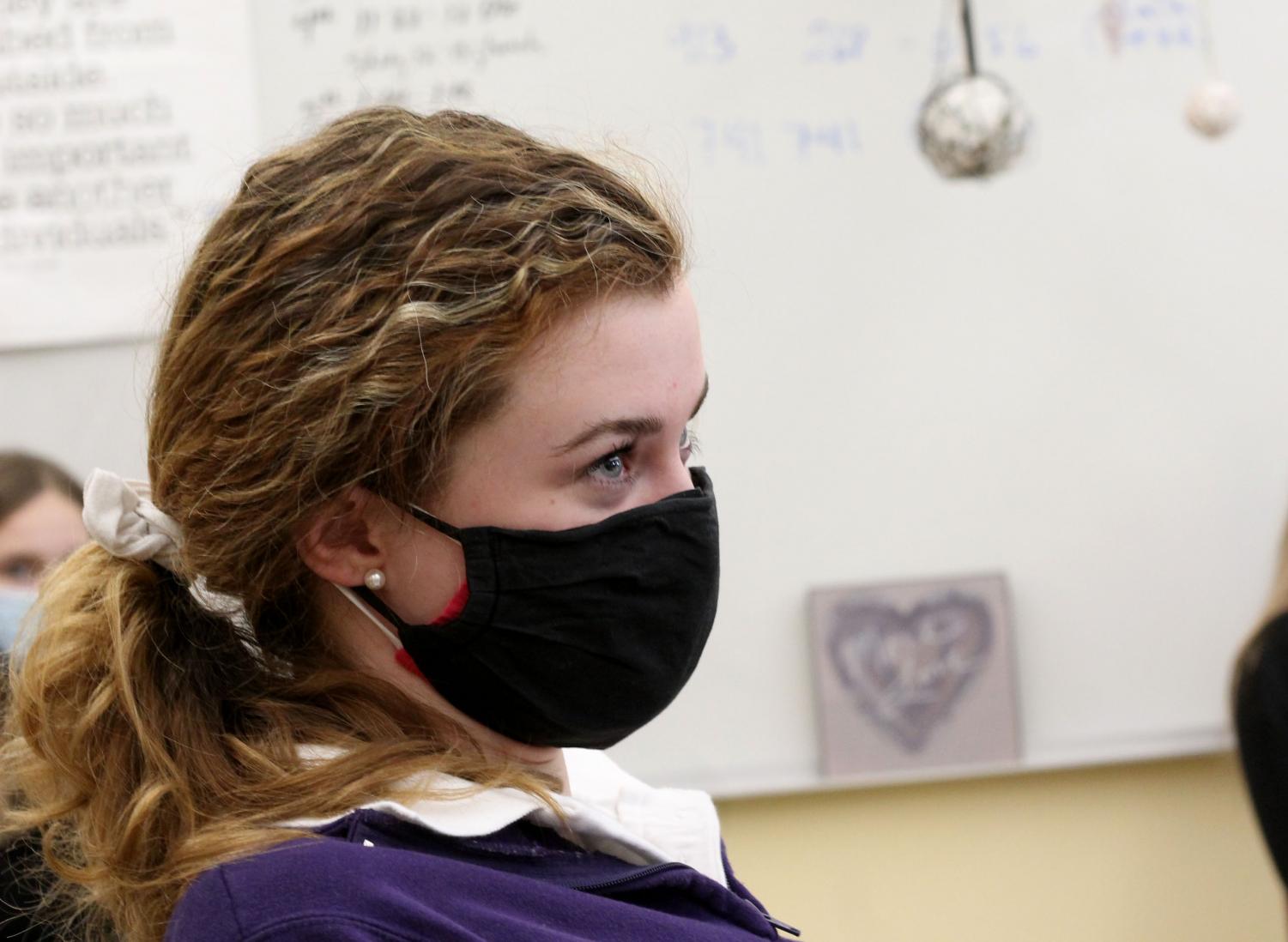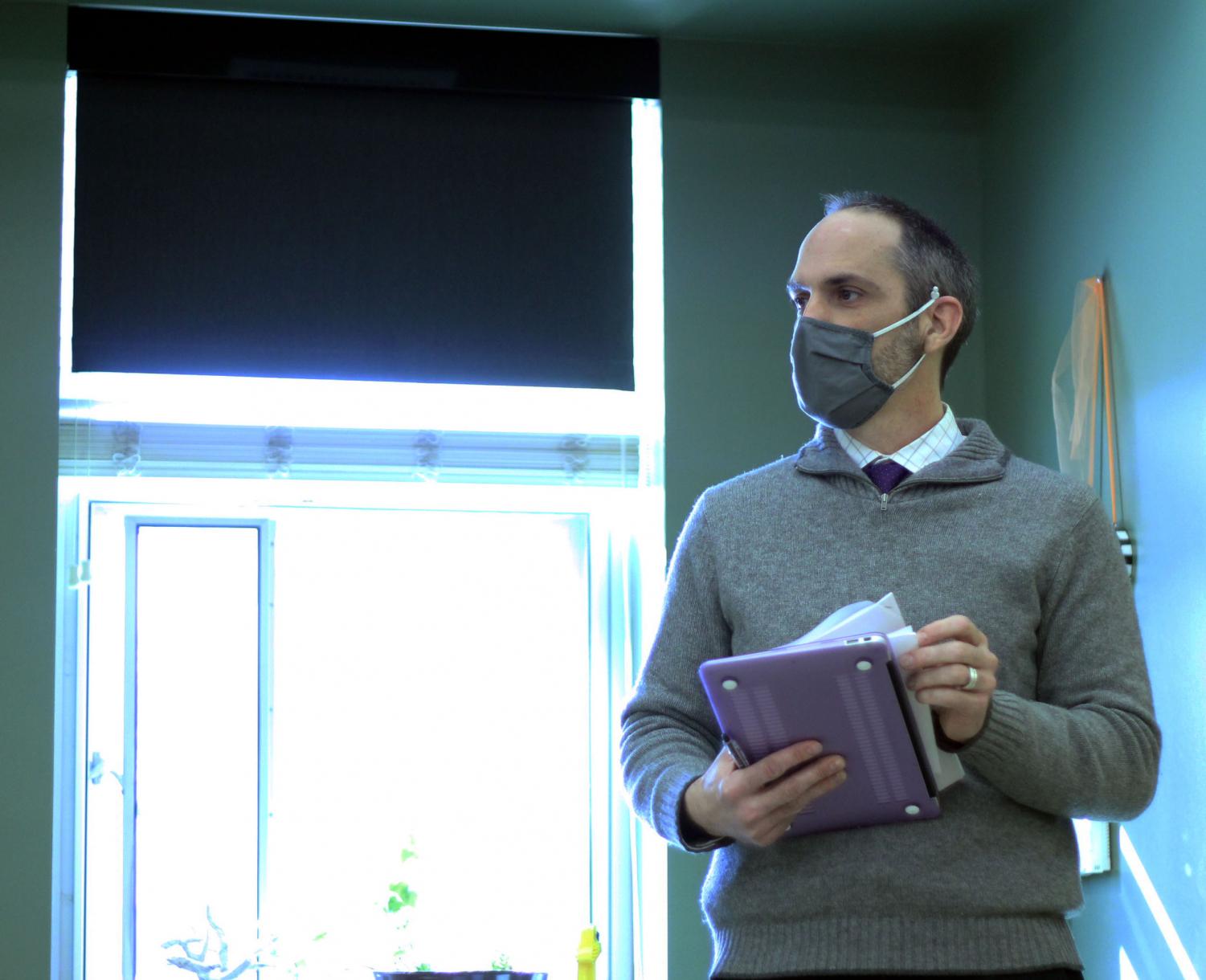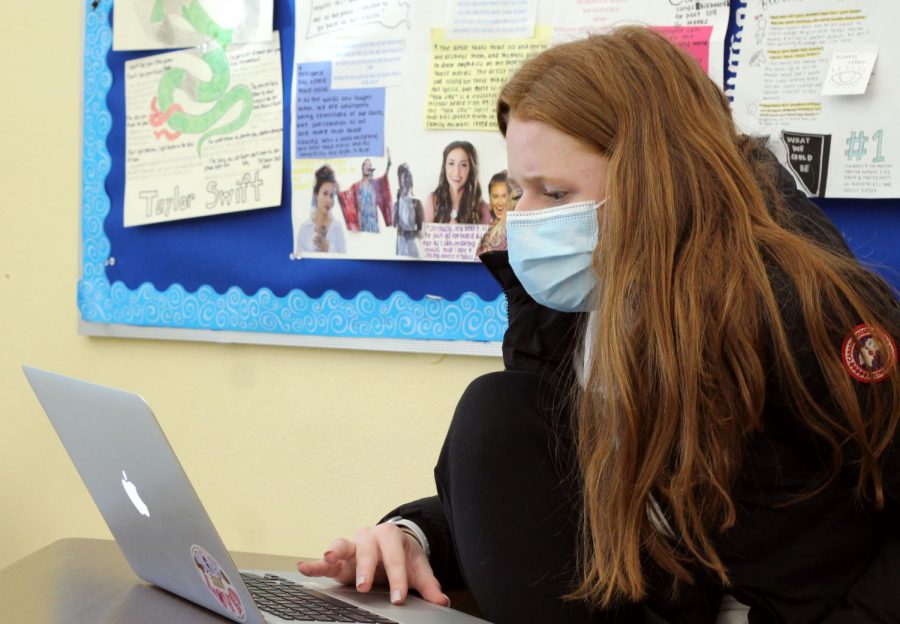Recognizing the Signs of Suicide
On Feb. 18, students participated in a Signs of Suicide Program that teaches students how to respond if they or a friend are showing warning signs of suicide.
PHOTO | Ava Albracht
Junior Elise Stringer fills out a questionnaire about how she has been feeling mentally after the SOS Program on Feb. 18.
Sophomores and juniors participated in Signs Of Suicide training during activity period on Feb. 18, where they learned how to recognize when a peer needs support, how to get help, and ways to help a struggling friend.
The Signs of Suicide Program is a youth suicide program which comes annually and helps students to recognize the signs of suicide in classmates and themselves. SOS’s acronym, A.C.T., stands for acknowledge, care and tell, and gives students and teachers an easy way to remember how to look out for peers who could be suicidal. As suicide rates among teens began to rise nationally, counselor Karen Phillips and the other counselors decided they needed a program to help educate students on the subject.
“We hope that the program builds a foundation of support for students and a comfort level in all faculty in understanding and supporting students,” Phillips said. “This can be a difficult topic to discuss, and the program hopefully opens up the lines of communication in our community.”

Even before COVID-19 hit and life was less isolated for most teenagers, it was still challenging for teenagers to open up, even to friends sometimes, about their struggles with mental health. Junior Olivia Mancina is adamant in her belief that suicide should not be taken as a jokes so she decided to join #ZeroReasonsWhy, a teen council that works to release the stigma that surrounds suicide.
“Jokes and downplay of the situation can be extremely harmful-especially at a time when someone having suicidal thoughts may be looking to see if a friend or adult is willing to listen to them and take what they are saying seriously,” Mancina said.
Learning about suicide and doing the SOS Program can be uncomfortable at times for many, but for students like junior Elise Stringer people’s stories can help show how she can help in a real life situation. It also helped her understand and recognize the warning signs better.
“I think the most valuable thing from this program is that there are many signs and once you see one to not ignore it,” Stringer said. “You can never be too safe in these situations.”
An common opinion about suicide is that talking about it will put the idea of suicide into young people’s mind; however, the SOS Program proves this idea wrong. The SOS Program has decreased self-reported suicide attempts by 40-64% in schools across the country, according to SOS. Mancina also believes that not talking about suicide can be harmful to all.

“This keeps life-saving conversations from happening and perpetuates the stigma around talking about suicide, when in reality, talking about suicide is not likely to make someone consider taking than life,” Mancina said.



